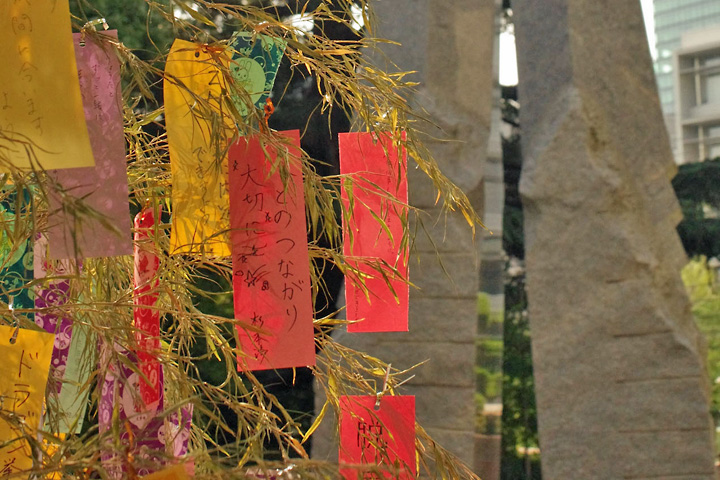Chinese legend adopted differently from area to area
Japan through The Five Srnses -Inquiries by Foreign Students
Updated on Aug 08 2016
Kokugakuin University held a “Wasou Day(Traditional Japanese Dress Day)” event on the day of Tanabata.
Q.Taiwan celebrates Tanabata as a “day of loving couples. ”Why don’t Japanese people do the same thing?
A.Chinese legend adopted differently from area to area
The Tanabata (七夕) festival is now celebrated on July 7 on either the Gregorian calendar or lunar one, depending on the area. This year, the lunar day falls on Aug. 9 on the solar calendar.
The event – which used to commonly take place shortly after risshu (立秋), or the beginning of autumn, which follows the end of the tsuyu rainy season – has a long history. Chinese literature dating back to the early third century A.D. referred to the myth of romantic love between two stars named Kengyu (cowherd) and Shokujo (weaver girl). They are believed to be able to meet only once a year on July 7 on the Chinese calendar. The myth is said to have spread to Japan in the late seventh century or early eighth century- the Manyoshu anthology carries about 130 Tanabata poems.
The story of love between Kengyu and Shokujo originally spread to East Asia in ancient times. As late as the 2000s, China and Taiwan gave a new, commercially oriented feature to the Tanabata festival as a “Qixi Qingren Jie” (七夕情人節), also known as the Chinese Valentine’s Day. It has become popular among young people there.
During the Nara period (710-794), another Chinese way of celebrating Tanabata is said to have reached Japan. Called kikoden (乞巧奠) in Japanese, it was an event for women to wish for improved skills in weaving, singing and playing musical instruments.
In the late 17th century and the early 18th century, terakoya (temple school) pupils are said to have started attaching to bamboo branches a set of tanzaku (短冊) or long, narrow strips of paper bearing their poems dedicated to Kengyu and Shokujo. This form of Tanabata festival became popular among adults in the Edo period too, and has been handed down to present-day Japanese society as an event to offer wishes to the stars.


published in The Japan News on 8/8/2016

